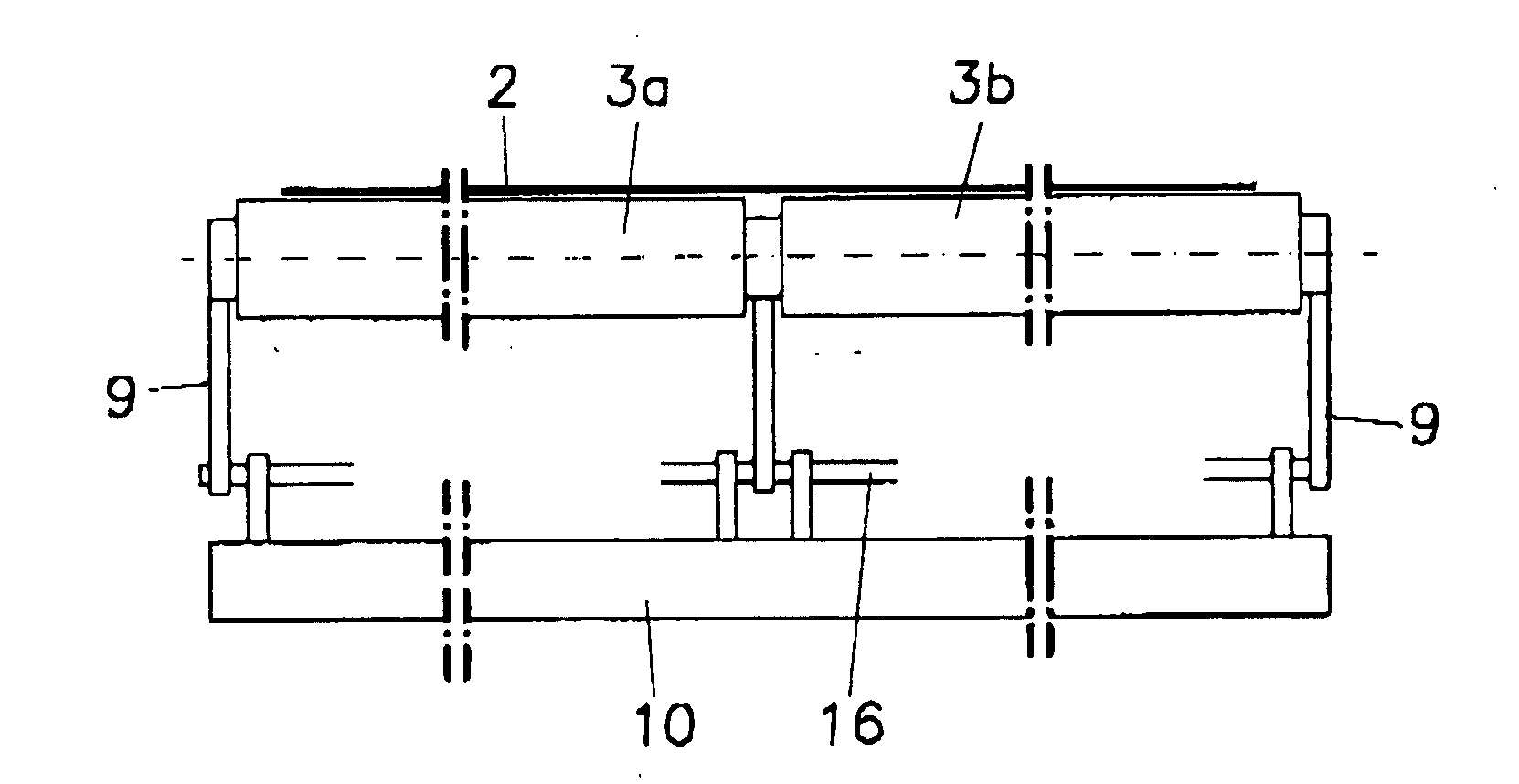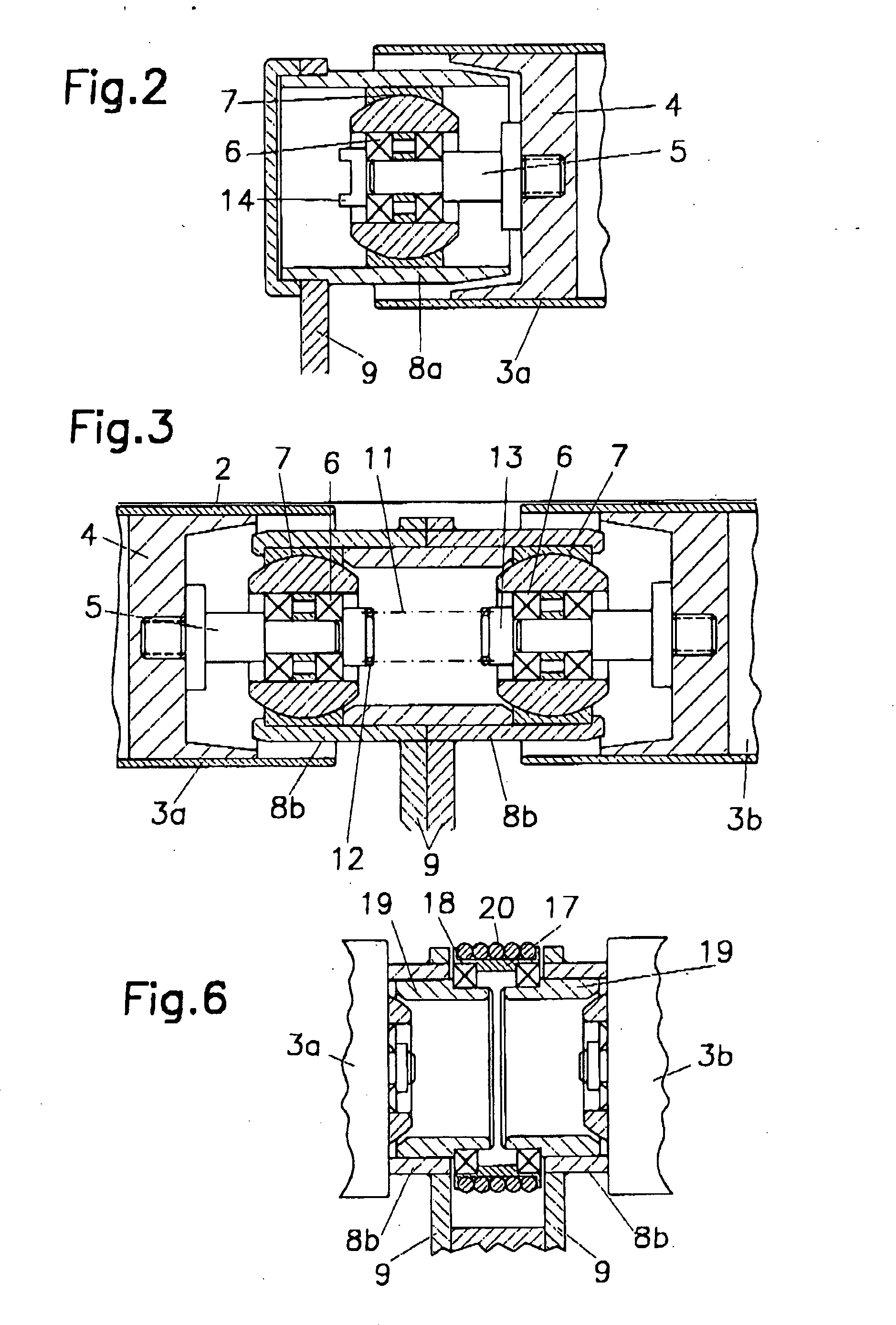Device for stretching webs of material transversely to their travel direction
a technology of material webs and transverse travel, which is applied in the direction of web handling, textile shaping, textiles and papermaking, etc., can solve the problems of frictional wear between the roller and the rubber cord, between the cord and the web of material will inevitably slide over the thread and thus be subject to abrasion
- Summary
- Abstract
- Description
- Claims
- Application Information
AI Technical Summary
Benefits of technology
Problems solved by technology
Method used
Image
Examples
Embodiment Construction
[0022]FIGS. 1 and 2 show a simplified version of a device 1, which can be used for the transverse stretching of a web of material 2, which runs in the direction of arrow 2a. The material web 2 can consist of textile, paper, plastic, metal in the form of foil, minerals in the form of nonwovens, and the like, or combinations of these materials.
[0023] The device 1 is composed essentially of two thin-walled round tubes 3a, 3b, which are aligned axially with each other and which are connected by filler pieces 4, inserted in both ends. Each filler piece carries a journal 5. These journals 5 are supported in the inner ring of ball-and-socket joints 7 by roller bearings 6, which are advantageously designed as ball bearings. In this regard, it is advantageous for the roller bearings 6 to be axially fixed in the inner rings of the ball-and-socket joints 7. The ball-and-socket joints 7 are mounted in sleeves 8a, 8b, which in turn are supported by the links 9. It is advantageous for the links ...
PUM
| Property | Measurement | Unit |
|---|---|---|
| Length | aaaaa | aaaaa |
Abstract
Description
Claims
Application Information
 Login to View More
Login to View More - R&D
- Intellectual Property
- Life Sciences
- Materials
- Tech Scout
- Unparalleled Data Quality
- Higher Quality Content
- 60% Fewer Hallucinations
Browse by: Latest US Patents, China's latest patents, Technical Efficacy Thesaurus, Application Domain, Technology Topic, Popular Technical Reports.
© 2025 PatSnap. All rights reserved.Legal|Privacy policy|Modern Slavery Act Transparency Statement|Sitemap|About US| Contact US: help@patsnap.com



